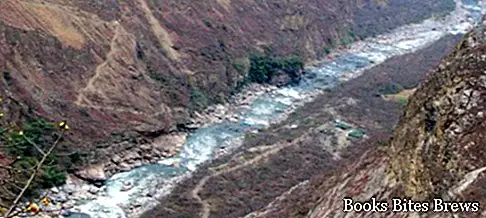The Apurimac river originates in the southern part of the Western Cordillera and, after a path of 880 km in a northerly direction, flows into the Rio Urubamba, originating the Rio Ucayali, which constitutes, with the Rio Maranon, one of the two upper branches of the Amazon River .
River course
The first stretch of the Rio Apurimac is heavily sunk in the volcanic tables, formed by lava and tuffs from the Middle and Upper Tertiary.
Arrived near Cuzco, its course heads west, along the inter-Andean course that divides the Western and Eastern Cordillera, up to the Abancay basin.
In that stretch various types of rocks make their appearance, including the sedimentary rocks of the Middle and Upper Cretaceous, which are composed of lutites, sandstones and limestones distributed in extensive outcrops.
Continuing its course, the Apurimac reaches the point of confluence with the Rio Pampas, also originating from the highlands of volcanic lava.
From there on, the river heads north, crossing the Eastern Cordillera.
Its valley is obtained from quartzites, fine sandstones and lutites from the Lower and Middle Palezoic.
To the north, the Apurimac route continues its course in a syncline, formed, to the south, by lutites interspersed with sandstone and quartzite banks of the Upper Paleozoic, to the north, by those of the Cretaceous and the Lower Tertiary.
Then he suddenly leaves the syncline, bending at an angle of thirty degrees to the east, before crossing a horst formed by rocks of the Upper Paleozoic.
Once out of the horst, the river continues its course to the north, up to the nearby confluence with the Rio Urubamba.
The Apurimac river is characterized by the deep carving of its valley and its gorges, comparable to real canyons.
Recommended readings- Lima (Peru): what to see
- Cusco (Peru): what to see in the archaeological site
- Peru: useful information
- Machu Picchu (Peru): what to see in the lost city of the Incas
- Apurimac: Peru's river that feeds the Amazon River
These canyons are very deep, so the climate varies from semi-arid to arid.
At the bottom of the gorges with vertical walls, the Apurimac flows with its rushing waters.
The Incas raised him to their divinity, dedicating a temple to him on the eastern bank.
In the Abancay basin, the Apurimac valley widens in width, with alluvial deposits that make the land extremely fertile.




